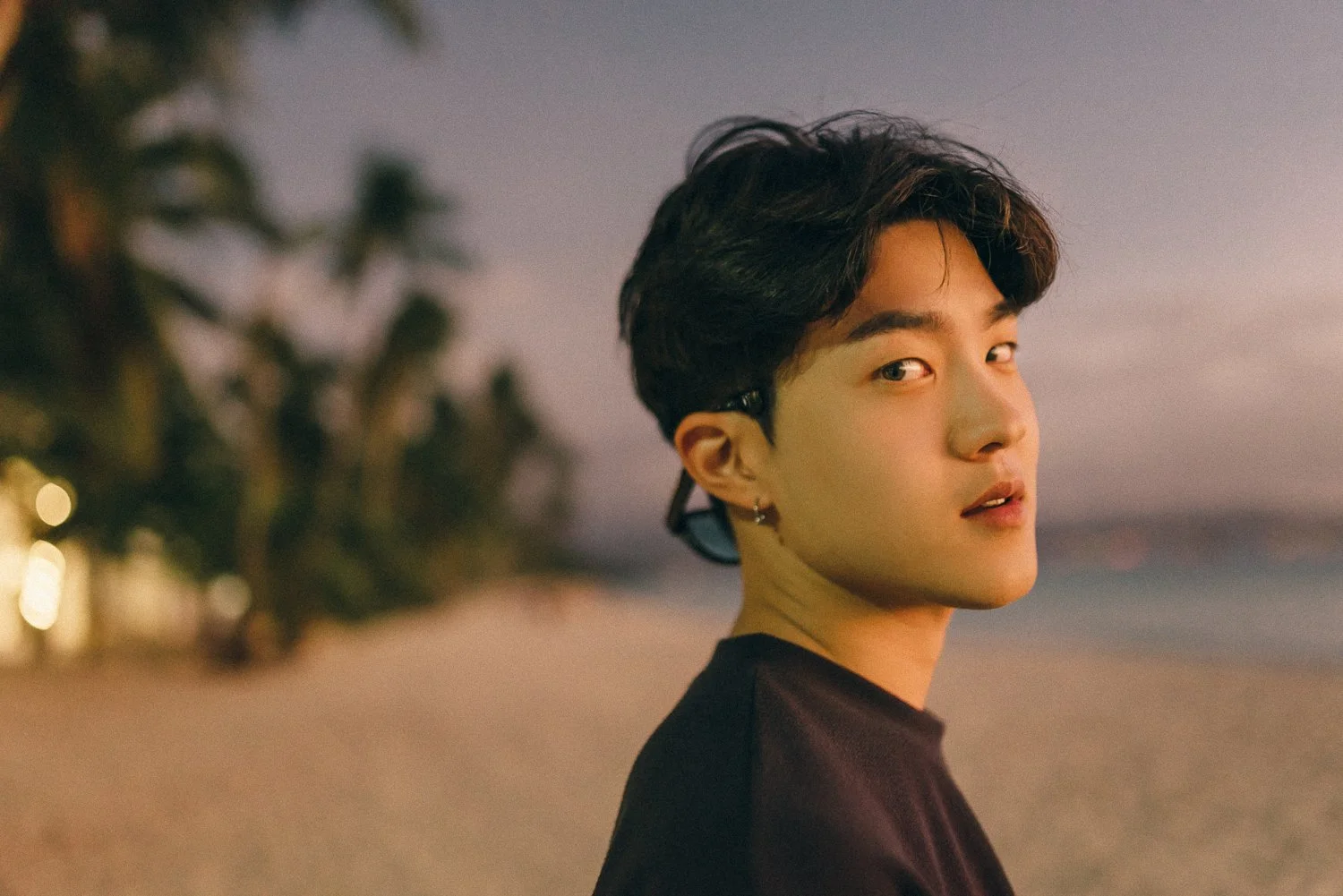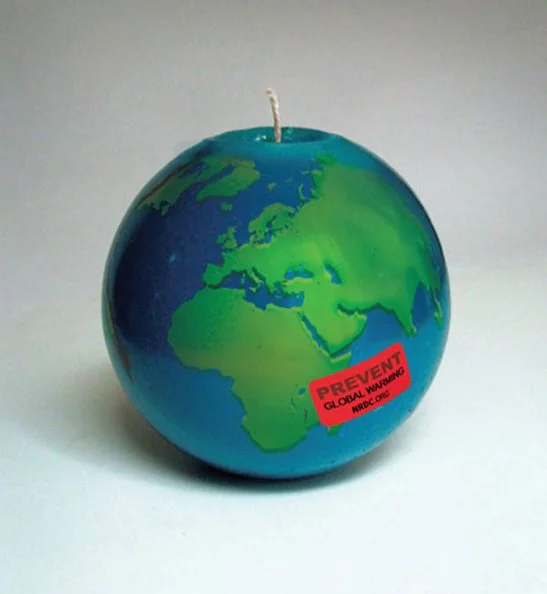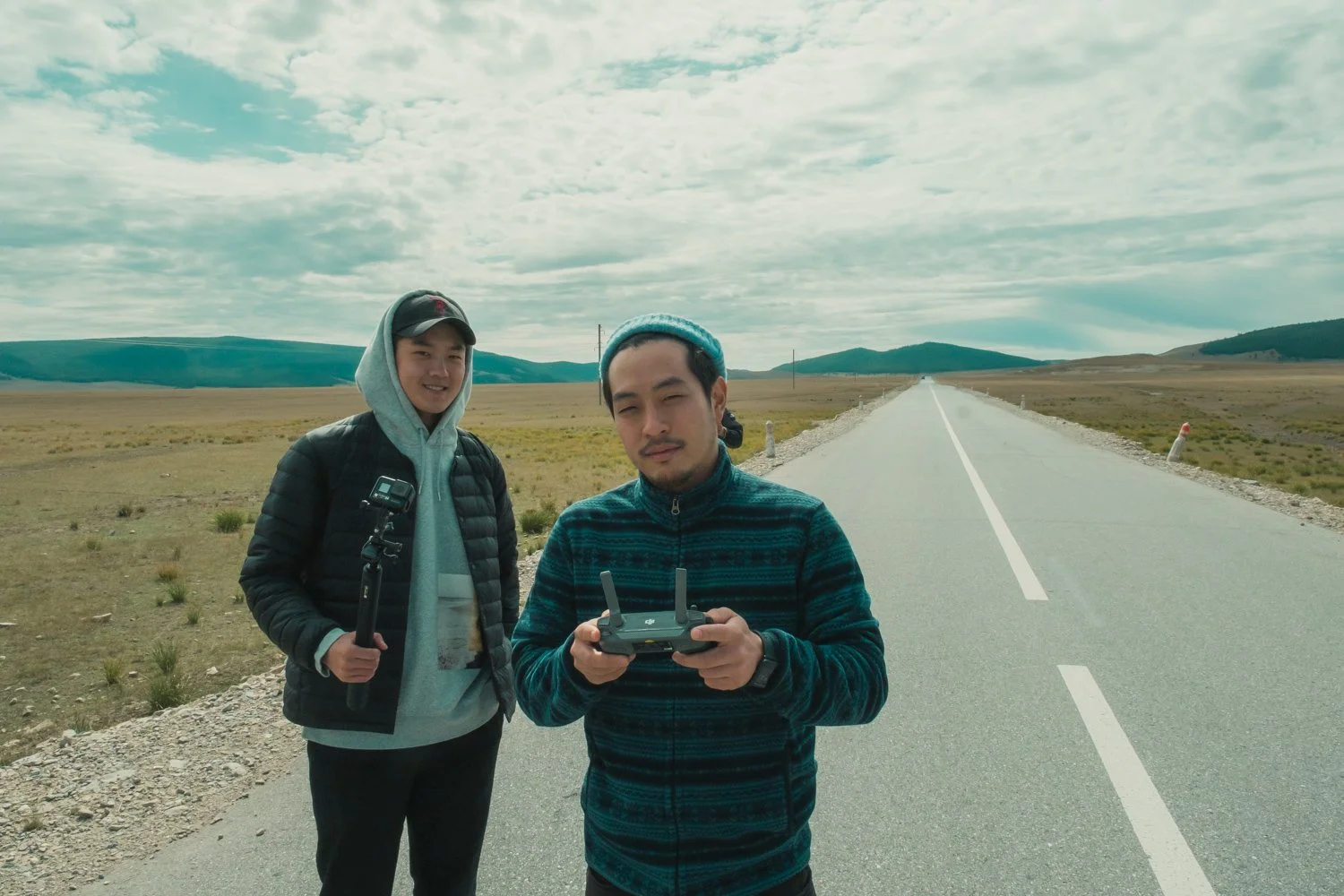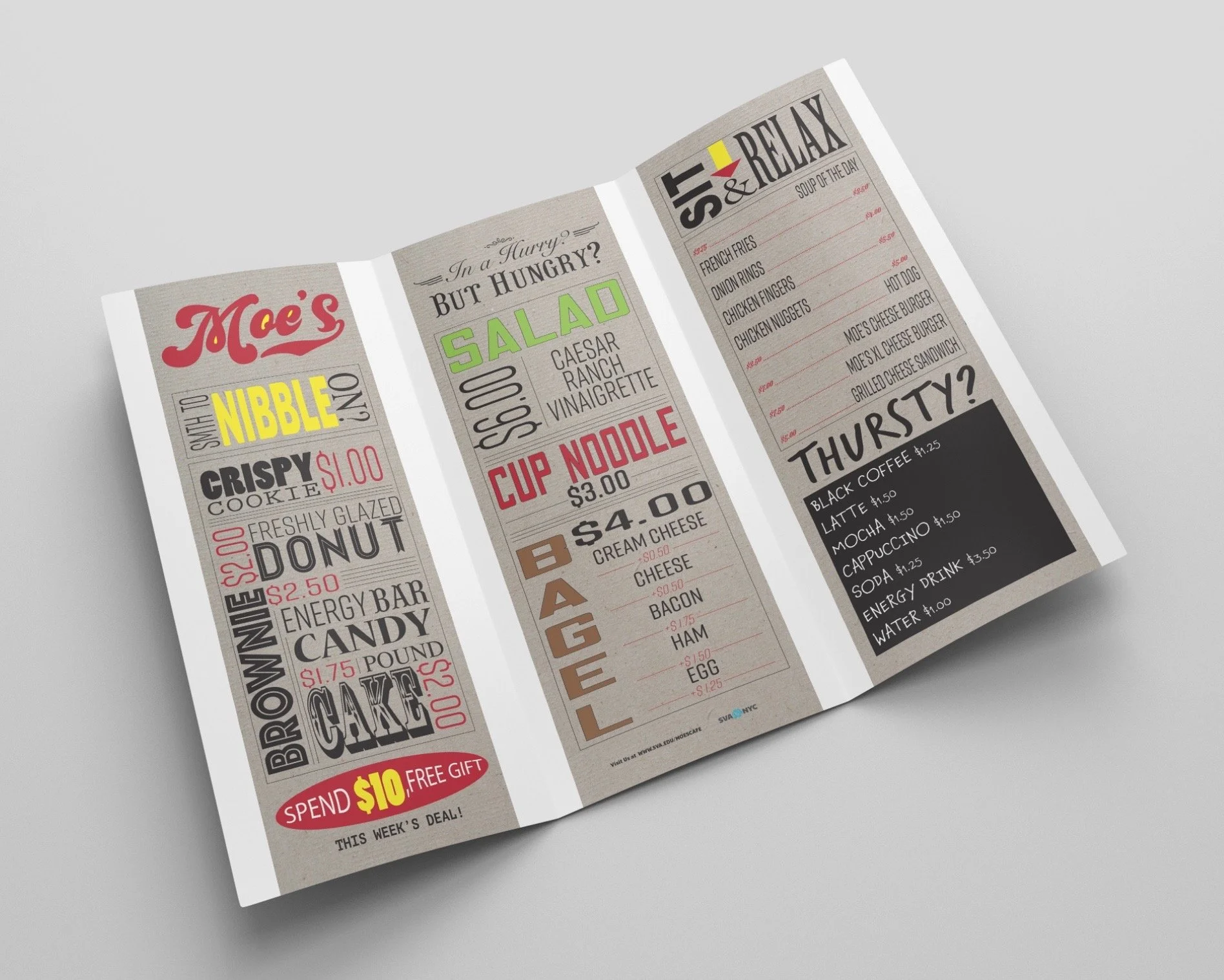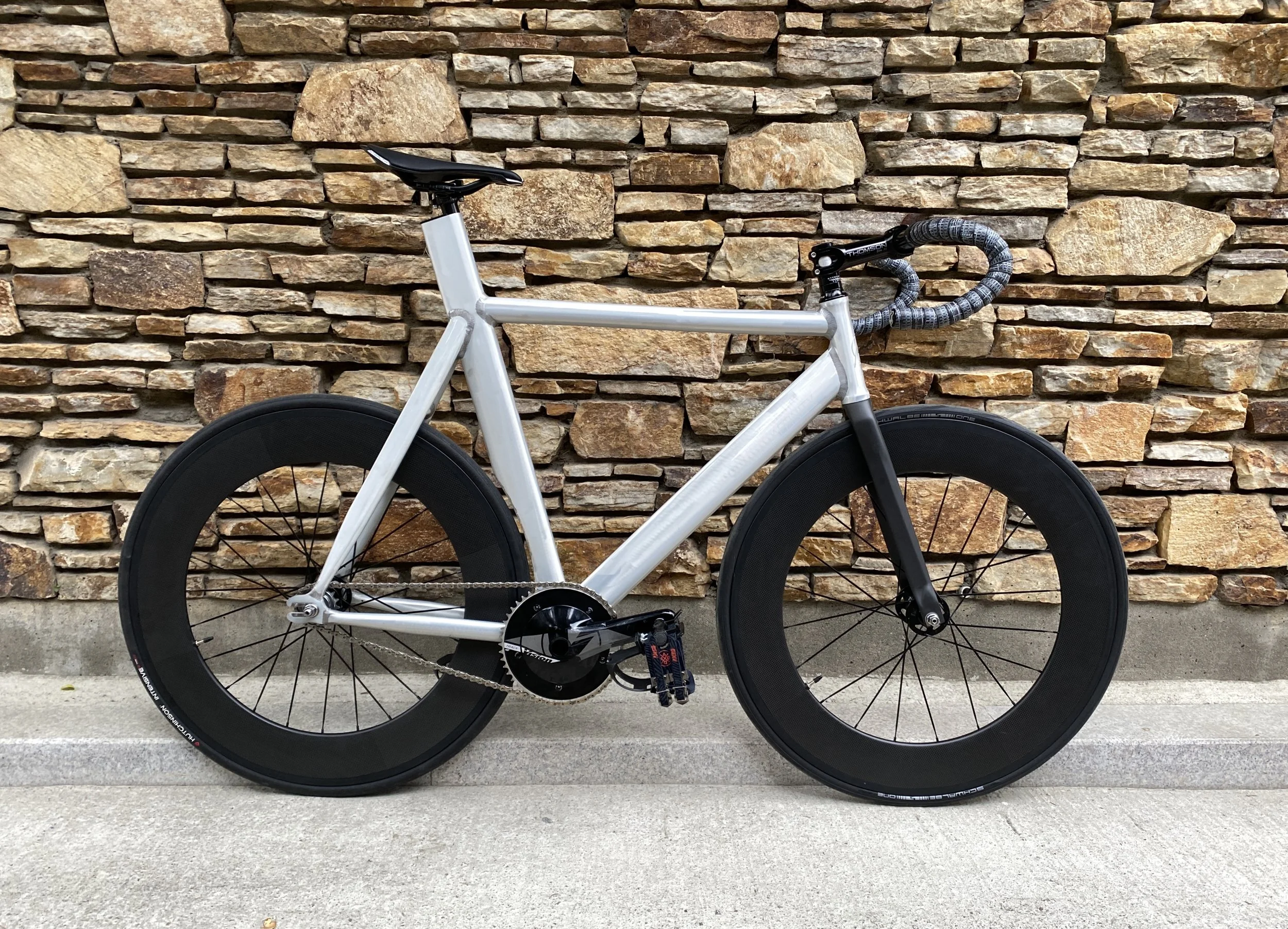This is: Noah Kang
On Advertisement Design, Mixing Cultures and Cycling
Seung Min Kang, who goes by his preferred name Noah, is a South-Korean advertising major at The School of Visual Arts (SVA) in New York City. He’s lived in Korea, England, the United States and Singapore - yet somehow went through the challenging French educational system. With a passion for the Arts from a young age, Noah knew he was destined for a creative path. Talking about his recent projects, his inspirations, his cultural experiences and his cycling hobbies, Noah reflects on his past, present and future. I am certain this interview will take you on a journey of its own.
“I think it was something innate. I couldn’t imagine myself doing anything else than something creative.”
A Creative Mind:
Asking him about his artistic beginnings, Noah tells me that as a kid he always had a pen and paper next to him: “I would constantly draw and doodle, inspired by everything around me. I think my mother was a great influence as she was a curator, working on many Biennale and art festivals around the world”. He goes on to say that when he was in high school, reading books and writing weren’t his thing: “I wasn’t able to sit still in front of my books, I would lose interest. But I could spend entire evenings drawing. I think it was something innate. I couldn’t imagine myself doing anything else than something creative”. I remember Noah showing me hyper-detailed drawings he would spend days on, all the while managing to complete his scientific high school courses in French alongside me.
I ask him how he decided to go for advertising. Noah replies with a story: “In order to apply for an art school, you have to build a portfolio. There are special criteria that you have to fulfill, for example having at least one pencil drawing, one watercolor work, one 3D design etc. It’s common in Korea to get private tutoring. I attended a program specialized in creative portfolio preparation. The tutors will teach you about drawing theory, conceptualisation, etc. At the time I was building a sort of trophy model out of Isopink foam. While carving out the foam, I realized I would need to use coarse sandpaper to achieve the desired look. So I joked to my tutor that it would be faster if we were to attach it to the back of a car and grind it out on the asphalt. My tutor replied that those kinds of out-of-the-box ideas might sound silly but are the stepping stone for someone in the creative world. He suggested an advertising major could be the way forward for me. The most important skill there was creative thinking rather than high-level artistic capabilities. That’s what put me on the path I’m on now.”
Inspirations and Cultural Influences:
Noah explains how the big advertising agencies operate in South Korea: “Conglomerates often have sister agencies that are specialized in advertising. These will operate internationally both for the mother companies and on their own accounts”. He goes on to tell me that some influential korean advertisers actually went to The School of Visual Arts in NYC. “When you work in advertising firms, you typically work in pairs: a designer and a copywriter. One designer that inspired me to look further into advertising was Yi Je-seok”. Jeski has focused his advertising design on social and environmental issues, with strong visual messages you may have already seen or heard of. However, Noah ended up choosing to focus on industrial, commercial advertising. Noah goes on to tell me that studying in the US is a goal for most Korean creatives, as there are more advertising-related courses within the curriculum and NYC stands out for its opportunities: “it’s where the best new ads appear, where trends begin, where new mediums are leveraged… So, studying at SVA was a clear choice for me”.
“I didn’t have a stable Korean identity.”
I go on to ask Noah on whether his South-Korean background had any influence on his advertising design and ideas. He tells me it's a complicated story: “I’ve lived less than half my life in Korea. I’ve been exposed to different cultures from a young age. I didn’t have a stable Korean identity”. He goes on to explain some of the challenges he’s faced as a consequence: “I wasn’t able to speak any language at a high-level, to have fluent reading and writing skills, which made interacting with my superiors quite complicated. Korean, English and French are all languages I learnt within very different contexts. I was scared it would inhibit my academic and professional endeavors. Whether I’m in the US or Korea, I’m seen as a foreigner by my local peers”. But Noah tells me that he eventually managed to turn his fractured identity into a strength: “I’m able to come up with ideas others normally couldn’t think of. Being around people from different cultural backgrounds my whole life, I have a better grasp of those individual mindsets. For example, I had worked on an advertising project for Netflix to entice more people overseas to watch shows that are foreign to them. Understanding how target audiences would react meant I could tailor my advertising strategy accordingly. That’s definitely something that differentiates me from others”.
Design Process and Working in Korea:
In 2019, Noah had to head back to Korea to complete his military service. During this time, he also started working in a travel agency startup, Air Travi. Asking him about his responsibilities there, Noah first explains his basic design and planning process: “I usually take a piece of paper and free-write everything that comes to mind on the project at hand. I think of everything that could properly bring my idea to life - theme, colors, order, symbols, messaging keywords, etc. Once that is done, I re-organise my thoughts and start working with the necessary software”. Noah then continues on to give concrete examples of the travels and sponsored advertisements he planned during his time at Air Travi: “I was Project Manager. The first project I worked on was a trip to Mongolia. The intention was to plan a packaged trip that our clients could follow. To promote this, we got three Korean social media influencers to be the stars of our marketing content. During the trip, we planned out filming and photoshoots along with the activities the travelers would take part in. To fund the project, we received sponsors from Samsonite luggage, Calvin Klein clothing, and more”.
“We planned out the shoots for the influencers to showcase these items in a way that would reflect their actual usage. I had to direct the photographers and producers on what the images should convey, the feeling, overall message and layout. After receiving the raw footage, I would give feedback to the crew on how our social media posts would be planned and what kind of editing may be needed to achieve the desired look. Following that, it's all about copywriting, hitting the right keywords in the social media captions, the right hashtags, etc. for the most effective marketing strategy”.
The Bike Files:
As it turns out, Noah has a passion for cycling. But more than that, he’s been learning the ins and outs of bike mechanics and design. Curious about how it all started, Noah rhetorically replies “Who didn’t have a bike as a kid?”. He continues: “When I was in middle school in Korea, I would meet up with my friends after classes to bike around town. Two of my friends got a fixed-gear bike at some point - it was my first time discovering a new type of bike. Those types of bikes were used in velodrome racing during the Olympics - but then people around NYC, SF or London picked up these bikes to be used as messenger bikes. That’s because compared to bikes with multiple gears and braking systems, they were lower maintenance, less costly and lighter”. At this point I could tell he had done his research, which became evident as he continued the story: “I asked my father if I could get such a bike. But as I was quite young, he told me this was not a cheap investment - so if he were to spend money on it, I’d have to think critically on the value of what we invest in, that I’d have to show I was committed to learning about these bikes and what it took to maintain them long-term. I spent six months looking into them - different frames, different brands, different riders. I learnt how to ride them before I had even stepped foot on the pedal… I still have my childhood bike to this day. [...] And as it turns out, Southeast Asia has quíte the fixed-gear bike community, so having it follow me to Singapore felt good”.
More recently, Noah realized there was so much more he could do with this passion than simply riding. He opens up on the matter: “Moving to the US for my studies and then going back to Korea to do my military service, I had not cycled properly in a while. Once I started working in Korea, I felt the urge to ride my bike again. I realized it was dated and probably a bit too small for me now. So i thought, you know what? I’m making my own money now. Why not build my own bike? So I started investing in all the different parts and assembling on my own. [...] It was so fun for me, like building Lego. It’s a completely new feeling being able to ride the bike you built yourself. [...] In the future it's one of my goals to become a framebuilder. I’d like to start building from scratch and apply my own creative knowledge, to use graphic design as well in order to customize my bikes. If I could make my own bike brand, I’d focus on developing custom designs for clients, or to customize their existing bikes. It’s also important to me to reuse and upcycle bikes and bike parts”.
Final Reflections and The Future:
I decided to ask Noah an open-ended question - what he believes the goals of advertising are: “The goal of advertising was to put forward an idea that was new to people, in the most efficient and visual way, like the old adage ‘An image is worth a thousand words’. But I believe that these days, the world of advertising has changed. It used to be a professional vocation that specialists took care of. Nowadays anyone can use the tools at their disposal to advertise themselves or their products and services through social media. It's challenging for traditional marketers to adapt their strategy. I think professional advertisements need to have a degree of complexity and leverage new mediums to their fullest, letting a new idea grow on its users. For example, if Facebook needed to advertise themselves in the past, they could just print out their logo, like the F with the blue background. It was simply about connecting with friends. But how do you advertise something like the Metaverse? It’s an experience, it's leveraging new technologies, it’s a virtual world. New advertising is about conveying the future potential, the story behind the thing, and adapting to new mediums as they come”. Noah’s words resonate true as we see new advertisements being more akin to short films, with huge production value. The viral and wow effect dominate. We often complain about ads on random websites, yet we can’t wait to see the newest ads prepared during the US Super Bowl championship halftime shows.
“New advertising is about conveying the future potential, the story behind the thing, and adapting to new mediums as they come.”
Looking forward, I ask Noah about his near-future plans: “As an international student in the US, I face many challenges and restrictions going forward. After I graduate, I still hope to get work experience in NYC. I’d like to get into a motion graphic studio. There are specific industrial studios targeted solely towards advertising [rather than the film industry for example] that interest me. However, I’m also very much interested in getting experience within the entertainment industry, for example working on lighting and visual backgrounds at music concerts. After that, I think I’ll go back to Korea. I realize now that I feel more at home there, that I need to reconnect with my roots”.
Noah is a multi-faceted creative with an eventful future ahead of him. From advertising to cycling, it is clear he is passionate about everything he does. Next time you see an advertisement that positively impacts you, think of the creative individuals behind it and just how powerful both traditional and contemporary mediums can be in conveying what never crossed your mind before.

